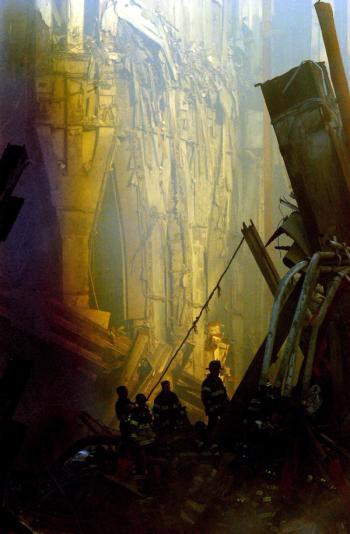
- Vol 32 No 9
- Volume 32
- Issue 9
Tough Love of Community: The Citizen Review Committee of the Houston Police Department
The story is decades old, but it reverberates today -- incidents of police brutality and excessive force, sometimes lethal. Here's a psychiatrist's story of serving on a citizen's review committee in Houston back in the day.
PERSONAL COMMUNICATION
In 1989 and 1990, there were several egregious incidents involving lethal force by Houston police officers. The shooting deaths of Ida Lee Shaw Delaney and Byron Gillum involved the Houston police department and stirred outrage from all areas of the Houston community and had reverberations far beyond Texas. The Shaw Delany affair involved several off-duty policemen who had chased Shaw Delany in their personal vehicle. Shaw Delaney apparently did not know she was being chased by police and tried to protect herself after being forced off the road. In the ensuing gun battle, she died.
Something effective had to be done to avoid violence and collective despair in Houston. Mayor Kathy Whitmire wisely decided to appoint a volunteer citizen review committee (CRC), rather than set up a paid review board to investigate all complaints of police brutality or excessive force. As a past president of the Houston Psychiatric Society, I volunteered for the CRC, and after a background check, I was appointed to a 2-year term. Being part of the CRC of the Houston police department was a most important professional and personal experience.
Frame of the CRC
The CRC review occurred after an investigation by the internal affairs section of the Houston police department and as the last step before review by the chief of police. The CRC reviewed in detail all investigations of misconduct by the Houston police department that involved allegations of unnecessary (excessive) force; serious bodily injury or death; all discharges of firearms by police officers; and any other incidents of alleged police brutality or misconduct for which the chief of police requested a review.
The CRC was charged with independently determining whether the investigation was complete; the conclusion was correct; and the disciplinary recommendation was appropriate. Although our primary administrative interface was with the commander of internal affairs, we also had access to the chief of police and the mayor.
CRC training
The CRC work began with 3 days of lectures, videotapes, and presentations about police procedures and law, and a discussion of the psychosocial and developmental career phases of police officers by a police psychologist.
Another part of training involved a Saturday night “ride-around” with an experienced team of police officers. This experience was an eye opener about the ambiguity associated with real law enforcement situations-I was able to see how anti-authority and anti-police some individuals are. This is particularly so when the offender is intoxicated or already angered by a domestic or community dispute. In volatile situations, a police officer, even when called on to help, can suddenly be hated by all the parties in the dispute.
Equally informative was the “shoot or don’t shoot” hands-on experience at the police academy training center. These drills are conducted at a series of run-down–looking buildings that resemble a Hollywood movie set. We found ourselves in the midst of realistic police dispatcher call situations, which were enacted by professional actors and to which we had to respond. I was handed a pistol filled with blanks and told to investigate several situations in fairly rapid succession (see Cases 1, 2, and 3).
The CRC panel
An effective workgroup has leadership, a defined structure, and clear goals. The CRC panel was an effective workgroup and as a whole had a clearer intellectual and moral grasp of issues than any one individual-the group was greater than the sum of the individual personalities.
Each member of our group brought his or her individual knowledge, skills, perceptions, biases, and blind spots. After spending hours reading the case files and listening to tapes and interviewees, I often thought that I knew what the panel’s conclusion would be. But, once the group began to share observations, we were amazed to see angles on the situations that had not been clear previously.
On one occasion, someone noted that the officers had gone to the wrong address. She had listened to the dispatch tape more carefully than the rest of us. This fact proved critical to our understanding of how the officers behaved when they approached the persons involved.
One of the committee members-a lawyer-helped order timelines and sequences of events. This allowed an orderly, logical, step-by-step process for reaching conclusions. He also had a keen sense of humor, irony, and ability to confront police authorities in an unflinching way when it was called for.
In November 1991, one of our members was murdered in her home. We dealt effectively with the shock and grieved about her death as a group. She had been fun to work with because of her unique sense of humor. As we forged ahead with the work, the group often talked about how she would have approached a situation we were considering.
Results of our deliberations
During the 2 years on the CRC, we reviewed 102 complaints of excessive force, professional misconduct, and alleged instances of injury or death.
The officer was completely exonerated 11 times (10.8%); 7 complaints were found to be unfounded (6.9%); in 47 cases (46.1%), the complaint (although worthy of extensive discussion) could not be sustained; and in 17 cases (16.7%), the panel sustained the complaint. Thus, we found acceptable police work in 83.4% of carefully reviewed cases.
The 16.7% of sustained complaints indicate Mayor Whitmire’s wisdom in establishing the CRC. The unacceptable behavior of the officer was dealt with effectively-in 3 instances, the panel’s recommendation for more severe consequences for the officer was respected and carried out. In one instance, a division chief attempted to pressure us subtly to steer away from a more vigorous investigation. After review of the situation, the chief of police transferred this person to another command.
In several instances, the chief of police supported our recommendation to commend individuals who had acted courageously and conscientiously in their articulation of complaints. Our recommendations for departmental policy changes and for officer training and public education were also supported.
We also reviewed 48 instances of an officer firing his or her weapon. We found 41 cases (85.4%) that were either justified or an honest accident; in 5 cases (10.4%), the discharge of a firearm was found to be unjustified; in 2 or 3 cases (4.2% to 6.3%), there was overlap with other complaints and the panel did not reach definitive conclusions; and in 2 instances (4.2%), I disagreed with the panel’s decision and wrote a “minority opinion.”
Conclusions
A volunteer CRC is superior to a formal review board within a big city’s bureaucracy. The enthusiasm, integrity, and no-nonsense work that we did on the CRC was impressive. The cases that were sustained support the need for a CRC in a large city. As members of the CRC, we were privy to bad police work and deplored those who had committed it. However, our experience on the CRC confirmed that the majority of the officers in the Houston police department are dedicated professionals with a crucial and difficult job. Being a CRC member of the Houston police department led me to routinely explore with my patients the degree to which they are meaningfully involved with the church or community as a measure of their mental health and progress in treatment.
I am grateful for having had the opportunity to serve on the CRC and will never forget the important effects that this experience has had on my professional and personal life. The recent crises in America involving aversion and mistrust between police and their communities leads me to urge psychiatrists to participate in community programs similar to the CRC of the Houston police.
Articles in this issue
over 10 years ago
A Review of Changes in DSM-5 Sleep-Wake Disordersover 10 years ago
Sleep-Related Violenceover 10 years ago
Parasomnias: What Psychiatrists Need to Knowover 10 years ago
The Correlation Between Sleep Disturbance and Suicideover 10 years ago
Sleep Disturbances After Traumatic Brain Injuryover 10 years ago
Koryagin, Suspicious of Glasnost, Recounts Ongoing Soviet Abusesover 10 years ago
PTSD in DSM-5: Understanding the Changesover 10 years ago
Weight Loss Associated With Cholinesterase Inhibitors in the ElderlyNewsletter
Receive trusted psychiatric news, expert analysis, and clinical insights — subscribe today to support your practice and your patients.

















